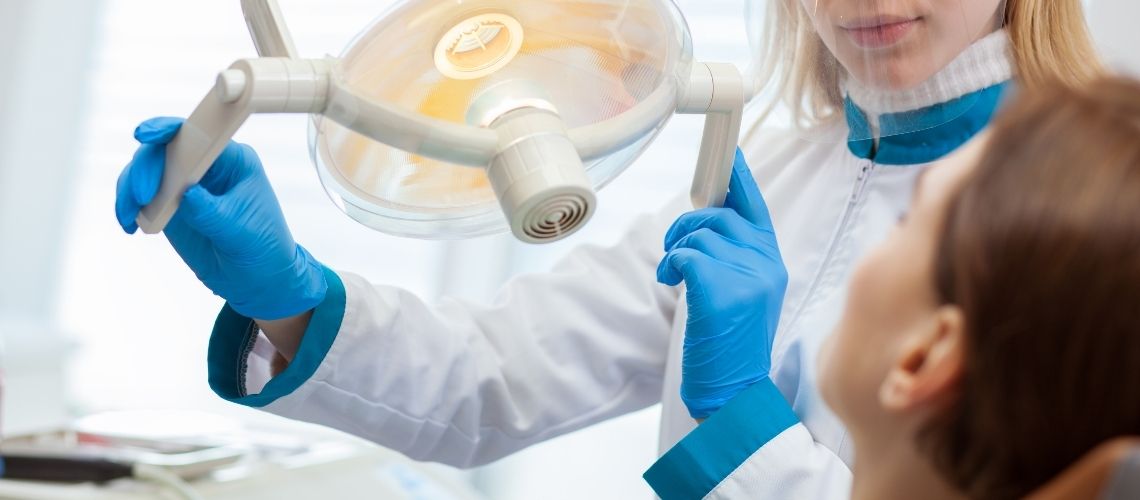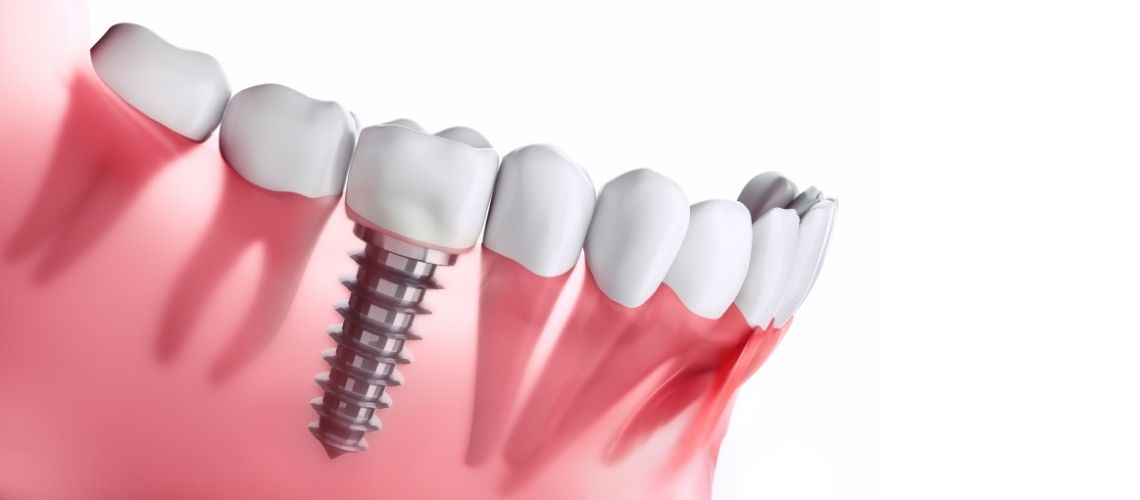Tooth fractures mostly occur as a result of physical impacts. This condition can cause sudden and severe pain in the teeth. Sensitivity is also among the main symptoms. Individuals facing such a problem should be examined by a dentist immediately. If broken teeth are not treated, they can lead to more serious health problems. Especially fractures that affect the pulp can cause inflammation at the root of the tooth. Such conditions usually require root canal treatment. Therefore, tooth fractures should be addressed promptly and correctly.
Tooth Fractures: Treatment Process and Importance
Tooth fractures are a common health issue, especially among children and young people. These injuries usually occur during sports activities or traffic accidents. The state of the tooth fracture varies depending on the location and severity of the fracture. The tooth may partially or completely dislodge. Sometimes the tooth may even be ejected from the oral cavity. Therefore, tooth fractures are among the conditions that require immediate intervention. In such cases, dentists follow these steps:
- Making an accurate diagnosis,
- Preparing an effective treatment plan,
- Regularly monitoring the patient’s condition.
This process is crucial to maintain the functionality and aesthetic appearance of the tooth. Quickly and effectively treating tooth fractures prevents serious complications that may occur in the future.
Factors Causing Tooth Fractures
Tooth fractures are a health issue caused by various factors. Physical impacts are usually the main cause of this condition. Accidents that an individual experiences can directly cause damage to the teeth. The structural characteristics of the tooth and surrounding tissues determine the impact of the trauma. This problem, which is particularly common during childhood and adolescence, continues for different reasons as age progresses.
- Falls are the most common cause of tooth fractures and account for the majority of cases.
- Injuries during sports activities,
- Bicycle and motor vehicle accidents,
- Physical violence incidents can cause tooth fractures.
Tooth decay also causes teeth to become more fragile. This condition can cause severe damage even from minimal traumas. In addition, certain anatomical features, such as a large overjet or insufficient lip structure, make the upper incisors more prone to trauma.
How Common Are Tooth Fractures?
Tooth fractures constitute a significant portion of oral injuries in all age groups. These injuries represent approximately 17% of all body injuries in children. Men experience these injuries more frequently than women. The majority of fractures occur in the upper jaw and typically affect the following teeth:
- Central incisors
- Lateral incisors
- Canine teeth
These teeth are among the most frequently broken due to their position in the oral cavity. Single tooth fractures are more common than multiple tooth fractures. Permanent teeth are more sensitive to trauma compared to milk teeth. The prevalence of fractures in permanent teeth ranges from 6.1% to 58.6%, while this rate ranges from 9.4% to 41.6% in milk teeth.
Symptoms and Examination Methods
Tooth fractures occur due to traumatic impacts and show various symptoms. Firstly, enamel cracks are usually asymptomatic and contain micro-level traces on the surface of the tooth. These cracks can be detected using the transillumination method. On the other hand, enamel fractures appear more prominently and are usually seen on the cutting edges of the teeth. These fractures involve the breaking of the enamel layer but do not damage the pulp.
Enamel-dentin fractures involve both the enamel and dentin layers. These fractures occur without exposing the pulp and damage the deeper layers of the tooth. Dentists detect these fractures during clinical examination. Sensitivity or tooth mobility is usually not observed in these fractures. However, complicated enamel-dentin fractures affect the pulp and can cause sensitivity in the tooth as well as sensitivity to temperature and pressure.
Crown-root fractures can extend to the root of the tooth and cause serious structural damage to the tooth. These fractures are confirmed by both clinical examination and radiographic examinations. The broken pieces are usually mobile, and patients complain of pain and sensitivity related to these fractures.
Radiographic examinations play a crucial role in the diagnosis and treatment of tooth fractures. Recommended radiographic methods include:
- Parallel periapical radiography
- Two additional images taken from vertical and horizontal angles
- Occlusal radiography.
If these radiographs do not provide sufficient information, a cone-beam computed tomography (CBCT) scan can be performed for more detailed imaging. This scan helps to more accurately determine the location and size of the fracture.
Especially when a tooth fragment is missing and the patient has soft tissue lesions, radiographs of the lips and cheeks can be taken to locate the missing fragment. This is important for locating and intervening in the fragment during the treatment process.
Treatment Approaches and Processes
The first intervention in tooth fractures is usually emergency treatment. Rapidly applying a cold pack to the injured area relieves pain and swelling. Dentists develop specific treatment protocols depending on the type and severity of the fractures.
- Enamel Crack: If the crack deepens, it is sealed with etch and bonding resin to reduce the risk of bacterial contamination and prevent discoloration.
- Enamel Fracture: The broken tooth can be restored with composite or, if necessary, the edges of the tooth can be adjusted. The first check-up is done after two months, followed by one year later.
- Enamel-Dentin Fracture:
- Binding agents and composite resin or glass ionomer are used to protect the exposed dentin.
- Calcium hydroxide is preferred as a lining material when the dentin is close to the pulp.
- The upper part is covered with glass ionomer.
If there is a broken piece, it is hydrated in water or saline solution 20 minutes before the procedure. This ensures tissue hydration and helps in repositioning the piece. Restorative options include direct composite restoration, indirect composite restoration, or ceramic restoration.
Enamel-Dentin Fracture with Exposed Pulp:
- If the pulp is exposed, pulp capping or partial pulpotomy is performed depending on the situation.
- Pulp capping is suitable if the exposure is short-term and the diameter does not exceed 1.5 mm.
- Partial pulpotomy is ideal for young teeth with an open apex, especially if the exposure is large or long-term.
Pulp tests and X-rays are recommended 6 to 8 weeks, three months, six months, and one year after the treatment.
Crown-Root Fractures:
- The first step is to remove the broken part to assess the extent of the fracture and the involvement of the pulp.
- If the pulp is not exposed, the remaining dentin can be covered with glass ionomer or composite resin.
- Treatment options include gingivectomy, orthodontic or surgical extrusion, and intentional reimplantation.
Root Fractures:
- The main steps are repositioning the broken crown fragment and checking with X-rays.
- The mobile segment is stabilized with a flexible and passive splint until the fracture heals.
- The healing process is followed with check-ups after four weeks, six to eight weeks, four months, six months, one year, and then annually.
These processes aim to maximize the function and aesthetics of the tooth and improve the patient’s oral health.
Other Important Factors
There are some special conditions that need to be considered in the diagnosis and treatment of tooth fractures. Firstly, the evaluation of fractures in milk teeth should not be confused with the natural process of root resorption in these teeth. This situation is common in children and requires a different treatment approach. Sensitivity can occur for various reasons:
- Luxation lesions
- Root fractures
These symptoms are usually correctly diagnosed through a comprehensive clinical and radiographic examination.
Possible Complications
Tooth fractures can cause various complications. The most common issue is pulp necrosis, which results in the death of the living tissue of the tooth. In advanced cases, various reactions occur in the internal structure of the tooth:
- Discoloration of the crown
- Formation of periapical abscess
- Pulpal obliteration
In addition, resorption of the tooth roots can be observed. There are two types of root resorption:
- Internal root resorption
- External root resorption
Fistula formation is another frequently encountered complication. These symptoms may indicate serious damage to the structure of the tooth.
Prevention and Patient Recommendations
Although there is no certain way to prevent tooth fractures, some strategies can reduce the risk. Custom-made mouthguards are of great importance for those who participate in contact sports. These mouthguards reduce the severity of impacts and can prevent traumatic injuries. Additionally, parents and school teachers should be equipped with first aid knowledge for emergencies.
Contact Sports and Precautions:
Custom-made mouthguards minimize trauma during contact sports.
These protectors should be made mandatory for athletes.
Education Programs:
- First aid courses for parents and teachers.
- Practical information on dental first aid after trauma.
These measures can reduce the frequency of tooth fractures and ensure proper intervention in case of emergencies.
Frequently Asked Questions
What does a broken tooth signify?
A broken tooth can be a sign of serious health issues. Particularly in elderly individuals, broken teeth may indicate osteoporosis or other systemic diseases. Additionally, sudden tooth breakage can signal advanced gum disease and weakened tooth roots. If left untreated, these conditions can worsen oral health and pose a risk to other teeth. Therefore, it is important to have a broken tooth evaluated by a dentist.
Why do teeth break suddenly?
Teeth can sometimes break suddenly. This usually occurs in teeth that have worn down over time or have large fillings. Additionally, frequent consumption of foods that increase the acid level in the mouth can lead to tooth breakage. Dry mouth makes teeth more brittle. Blows to the face or accidents during sports activities can also trigger tooth breakage. Each of these factors weakens the tooth structure and increases the risk of breakage.
Which vitamin deficiency causes tooth breakage?
Tooth breakage is usually caused by a deficiency of vitamin D and vitamin K. Vitamin D is essential for the healthy development of teeth and bones. On the other hand, vitamin K supports bone mineralization, helping to keep teeth strong. Insufficient intake of these vitamins can lead to weakened teeth and, as a result, breakage. Therefore, individuals experiencing tooth breakage are advised to consume foods rich in these vitamins.
What to do if half a tooth breaks?
If half of a tooth breaks, different treatment methods can be applied depending on the situation. If the break does not reach the root of the tooth, the broken piece is removed, and the damaged area is treated. However, if the break extends to the pulp, a root canal treatment may be necessary. Afterward, a crown can be placed to protect the tooth and restore its aesthetic appearance. In both cases, the functionality and aesthetics of the tooth are preserved to the maximum extent with appropriate treatment methods.
Can stress cause teeth to break?
Stress can indirectly cause teeth to break. People under stress often develop habits like teeth grinding. This causes excessive pressure on the teeth, leading to cracks and eventually to breakage. Additionally, stress suppresses the immune system, lowering the body’s overall resistance, which can negatively affect dental health. Thus, stress can indirectly contribute to tooth breakage.
What should I do if my tooth breaks?
If a tooth breaks, the first thing to do is collect the broken pieces. These should be placed in a clean, dry container. Then, rinse the remaining part of the tooth with warm water to remove dirt and debris. If the tooth breakage was caused by an injury, apply a cold compress to reduce swelling. After these steps, immediately contact a dentist and schedule an emergency appointment.
How to strengthen teeth?
To strengthen teeth, regularly use fluoride toothpaste. Brush your teeth after every meal and especially before bedtime. Limit the consumption of sugary and acidic foods, and drink plenty of water. Reduce the intake of starchy foods and instead choose calcium-rich foods. Chewing sugar-free gum can help increase saliva production, which aids in the remineralization of teeth. Probiotic intake can also be beneficial for dental health. Regular visits to your dentist will help maintain healthy teeth.
What should I do if my front tooth breaks?
First, see a dentist. The treatment method will be determined based on how the tooth has broken. If the break is superficial, the dentist can restore the tooth with a filling or bonding. In deeper breaks where the root is affected, a root canal treatment may be necessary. After the treatment, the root can be reinforced, and the tooth can be finished with a porcelain crown. For minor breaks, laminate technology can also be used, which provides quicker results.
Why do teeth break into pieces?
Teeth often break into pieces due to various factors. First and foremost, tooth decay can wear down the enamel, weakening the teeth and leading to breakage. Additionally, genetic factors, such as Dentinogenesis imperfecta and Amelogenesis imperfecta, can make teeth more fragile. Poor oral hygiene accelerates enamel destruction and causes cavities. Additionally, teeth grinding, also known as bruxism, can cause cracks due to the pressure applied to the teeth. Consumption of acidic and sugary foods weakens the enamel, and as people age, teeth naturally lose their strength. Dry mouth can also lead to quicker tooth breakage due to reduced saliva production.
Why do front teeth crack?
Front teeth usually crack as a result of excessive force. This force can occur when biting on hard foods or from habits such as teeth grinding. Additionally, an inattentive blow or accident can cause cracks in the front teeth. Front teeth are especially vulnerable to blows to the face. If the tooth structure is already weak, even minimal pressure can cause cracks.
Can a half-broken tooth be filled?
A half-broken tooth can often be restored with a filling. However, this depends on the type of break and the current condition of the tooth. The dentist’s recommendation will be decisive in this matter. The size and location of the break will influence the choice of treatment method. The type of filling material and the health of the surrounding tissue are also important. Therefore, your dentist should conduct a thorough evaluation to determine the most suitable treatment method.
Can teeth grinding break teeth?
Yes, teeth grinding can lead to tooth breakage. Especially when done unconsciously at night, this action exerts intense pressure on the teeth. This pressure can cause cracks in the teeth, which over time can deepen and eventually lead to breakage. Additionally, teeth with fillings or previous treatments may be more susceptible to this problem. Therefore, bruxism poses a serious threat to dental health and requires preventive measures.
What to do with a broken molar?
To treat a broken molar, first consult a dentist. The dentist will assess the condition of the break; if the break is small, it can be repaired with a filling. For larger breaks, bridges or crowns may be preferred. In some cases, a root canal treatment may be necessary, which involves removing the nerve inside the tooth and filling the tooth. In summary, the treatment for a broken molar may include a filling, bridge, crown, and if necessary, a root canal treatment.

Dentist Handan Nohutcuoğlu graduated from Ege University Faculty of Dentistry in 1987. He has gained experience in various fields by working in many dental polyclinics throughout his career, combining his knowledge and experience. He continues to work at Hollywood Dental at the moment.









